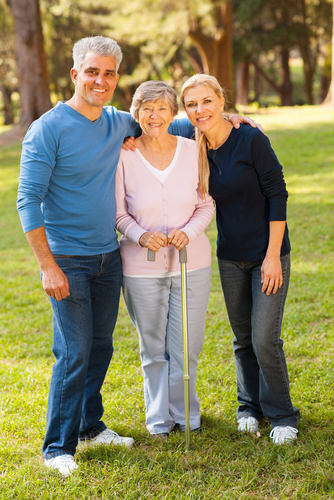Simple strategies to prevent falls
The Drive Products That Make the Difference
Falling. If you are an older adult, or care about one, it’s probably one of your greatest fears. And it’s not unfounded. About 12 million older Americans—that’s 1 in 3—fall every year. Falls are the leading cause of both fatal and nonfatal injuries in older adults and more than half of all falls happen in the home.
Injuries caused by falls can include lacerations, hip fractures, head traumas and more. Many of these injuries lead to a loss of physical mobility and independence. They can also have psychological effects, creating fear that leads to inactivity, which leads to poorer physical and psychological health, and ultimately a reduction in quality of life.
But it doesn’t have to be that way.
Simple measures can reduce the risk of falling and help older adults retain more mobility and independence well into their later years.
Risk Factors for Falls
Some risk factors for falling include:
Medication – Many older adults take medications, and some of these (including over-the-counter medications) can cause dizziness or impaired balance. It is important to review medications regularly with doctor and be on the alert for side effects that can increase the risk of falling.
Vision problems – Not wearing necessary glasses can contribute to falls. Also, progressive lenses or bi/trifocals can be a problem on stairs. Keeping up with regular eye care and always keeping eyeglass prescriptions current is essential.
Household hazards – Slick floors, poorly lit stairwells, loose rugs, and clutter can all contribute to falling at home. It’s a good idea to replace burnt out bulbs right away, and put non-slip mats or tape under area rugs. Keeping the floors clear of clutter goes a long way towards reducing the risk of tripping. The bathroom, with its slippery hard surfaces, can be particularly dangerous.
Mobility Devices Can Help Prevent Falls
Although it often happens, limiting activity is not the answer to keeping older adults safe from falls. Physical activity helps maintain muscle strength and range of motion, and social activities are important for emotional health. In addition to making necessary modifications in the home, assistive devices can help make walking safer and steadier.
For a person who is able to walk but is no longer steady and secure, a cane offers much-needed stability and confidence. When choosing a cane, make sure the length fits properly, allowing for a slight bend in the elbow. A cane that’s too long is hard to use, and a cane that’s too short can make the user more unsteady.
One popular cane is the Drive All Terrain Cane. This cane has a unique feature—an integrated gripping claw that can be easily employed when walking on slippery or uneven outdoor surfaces. The gripping claw has 4 stainless steel spikes that provide traction. When the gripping claw is not in position, a standard rubber tip is usable on any surface. With the All Terrain Cane, a user can be confident indoors or outdoors, wet or dry.
A walker or rollator is an excellent choice for someone who needs more stability than a cane can offer. The four legs and two-handed grip make walkers very steady and reliable. These devices have come a long way in recent years, with improved appearance and a host of comfort and safety features.
The Nitro Aluminum Rollator is one of the most popular models Drive manufactures. This sophisticated Euro-design rollator has large 10” front casters to make steering easier and more comfortable. It adjusts easily to users of different heights, and easily folds to ultra-compact size for storage. With a durable, comfortable seat and a removable zippered storage bag, this rollator can make it easier to get around, rest when necessary, and carry things.
The Clever-Lite Walker features front wheels that can swivel or remain fixed in position, depending on the user’s needs. The Loop Lock feature allows the user to lock and unlock the wheels without letting go of the hand grips and without bending. Easy to fold and weighing only 14 pounds, the Clever-Lite walker is convenient to use in the home or take along on outings.
It’s obvious that falls can occur while a person is walking, but it’s far from the only time. Standing and reaching for items on high shelves or down very low can also lead a person to lose balance and fall. A reacher is a simple device that can make a big difference. The Drive Hand Held Reacher extends the user’s reach by 32 inches, weighs only 5.4 ounces, has an easy-to-use trigger, and includes a magnet at the tip for picking up metal items.
Installing grab bars in the bathtub can make the difference between a peaceful shower and a frightening ordeal. Drive manufactures grab bars that can be installed permanently as well as models with heavy-duty suction cups that install and remove easily.
If you have a loved one who you feel is at risk of a fall, or who has already fallen, talk to them about taking steps to prevent future incidents. It can be hard to accept that help is needed, but when it comes to falls, prevention is truly the best strategy.

Drive's Fall Prevention resource page
View our fall prevention resource page to see more related articles.
Explore all of our Bathroom Safety options
Drive offers a wide range of bath benches, grab bars and more to fit your specific safety needs in the bathroom.
Browse our diverse line of Mobility Products
Drive offers an extended line of rollators, walkers, canes and more to assist with your mobility needs and prevent dangerous falls.





